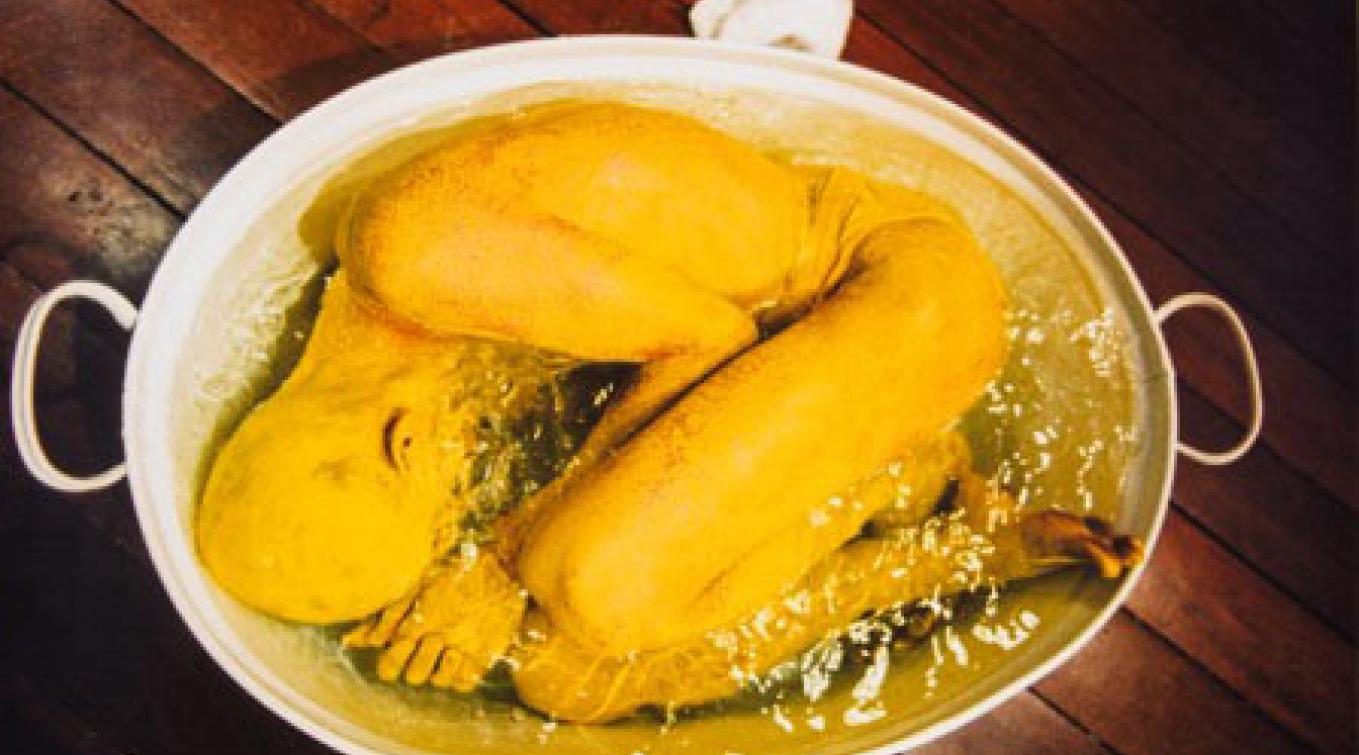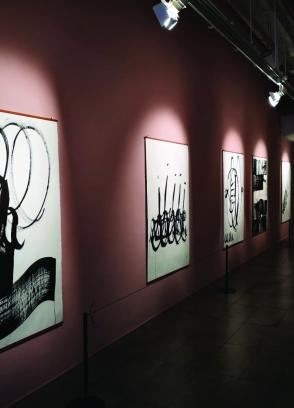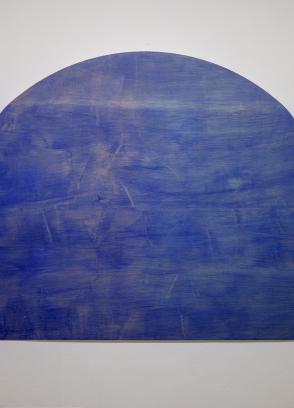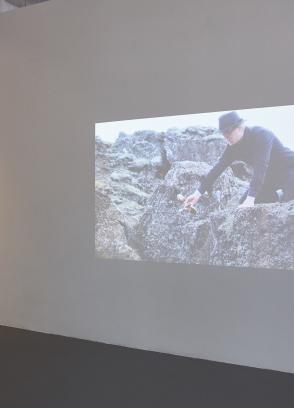Lee Wen, Journey of A Yellow Man No. 11: Multi-Culturalism, 1997. Inkjet print on paper, 101.6 x 144.8 cm. Collection of National Gallery Singapore. Image courtesy of National Heritage Board
by Ian Tee Wang Loong, BA(Hons) Fine Arts alumnus (2018)
“It is not that artists want to change the world, but the world may change us in ways that we are not willing to accept. Therein lies the need for resistance. And the purpose of our work as artists: without really trying, we change the world.”
It has been more than three months after Lee Wen’s passing as I pen this piece. I write from the perspective of a stranger, unable to offer personal anecdotes or inside information. In the days since 3 March 2019, there were numerous moving tributes published online and on social media, by individuals on whom the artist had an impact. I write not only from a distance, but perhaps also too late?
I distinctly remember the two occasions I saw Lee in person. The first was in January 2016 at Independent Archive (IA)1, while I was attending Martin Constable’s presentation on the ‘perfect art school’, part of their series of Monday Moot talks. That topic had piqued my interest; it was my first year in art school too. Martin’s discussion breezed through the institution’s history from the Western tradition, before ending with “a modest outline of what he believes to be the perfect art school.” Truth be told, I remember nothing of his proposition today but I do know what it entailed for me: what do you want out of art school?
In 1988, Lee Wen found his calling to be an artist, to which he responded by leaving his career in banking to enroll at LASALLE. He was already 30 years old then, imagine that! It was a time before the ‘professionalisation’ of art, where one enrolls in an art school with the intention of being an artist. Some may say it was a more idealistic time, but I can be certain that Lee believed in freedom. One only needs to engage with his work to grasp the spirit and tenacity behind this man.
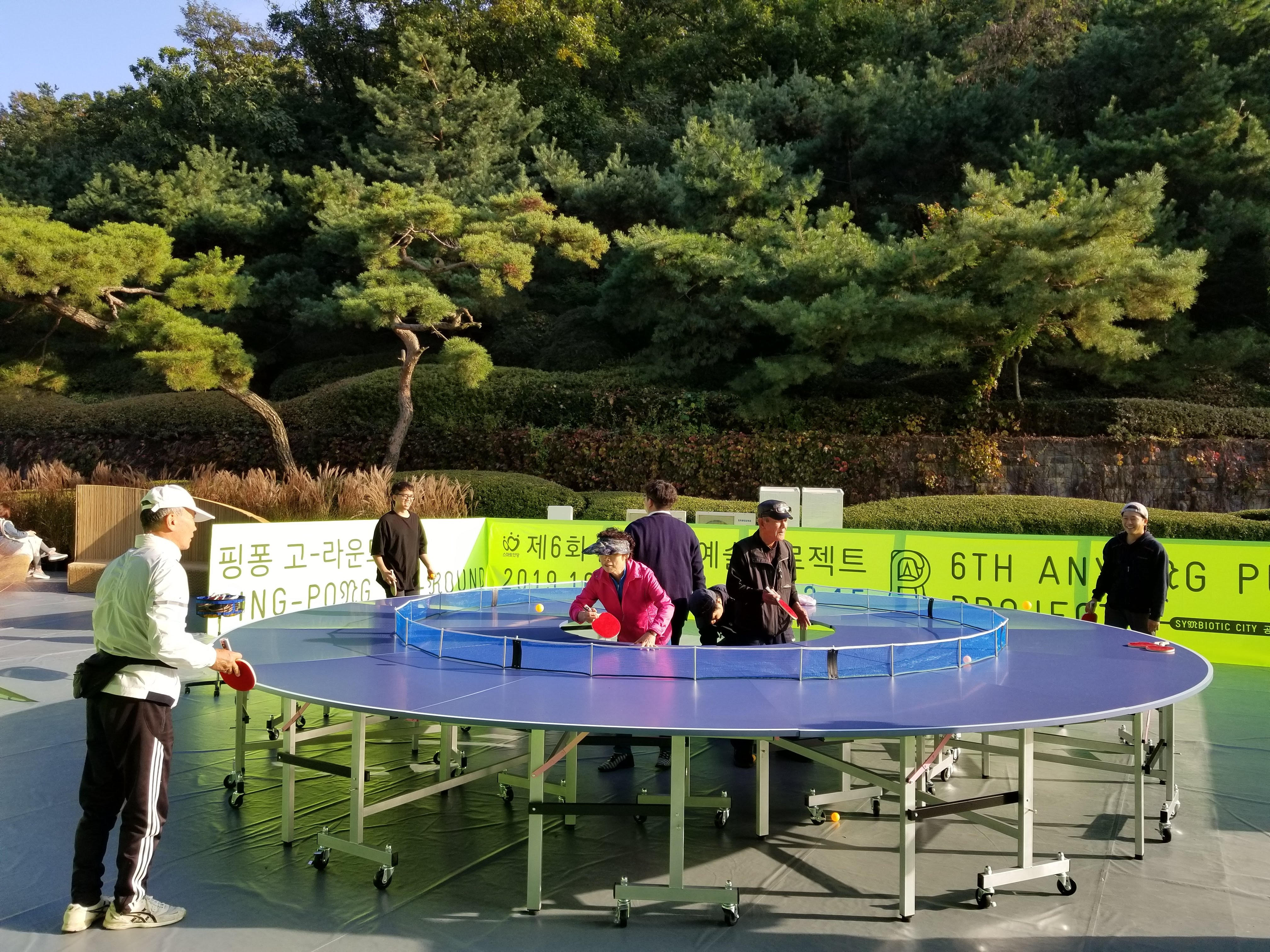 Lee Wen, Ping Pong Go Round (Korea), 2019. Image courtesy of Satoko Lee
Lee Wen, Ping Pong Go Round (Korea), 2019. Image courtesy of Satoko Lee
Speaking up and acting out (in the name of art or otherwise) takes more than just idealism, it takes sacrifice. Woon Tien Wei wrote a poignant piece in ArtAsiaPacific2 about Lee’s commitment to keep IA alive, in spite of his failing health. Founded in 2012, IA is a platform dedicated to time-based and event-specific art, and also one of Lee’s last major projects. It comprises a reference library and a collection of archival material pertaining to art in Singapore and the region.
I recall my uncertainty if I had arrived at the right place on my first visit to IA, at its former 67 Aliwal Street location. It was a house consumed by its content, relics from Lee’s performances nested among bookshelves and stacks. There was a fragility to the space, which mirrored Lee’s body after years of battling Parkinson’s disease. However, as Tien puts it, IA was also a 'social body', which to a younger generation, is akin to an opportunity to hold hands with history. The archive has since been digitised and made accessible at the NTU Centre for Contemporary Art Singapore and the Asia Art Archive, Hong Kong3.
Even though his mobility was restricted, Lee’s mind remained sharp. Hearing him speak at the Parkview Museum’s Acts of Voicing artist panel left a strong impression on me. It was a testament to the strength of will, and entirely captivating. Lee was also vocal in airing his views in the digital space, through his published writings and on Facebook page. His blog, Lucid Dreams in the Reverie of the Real, was used as the title of his mid-career survey exhibition at the Singapore Art Museum in 2012.
Among the metaphors used to describe a dialogue, Lee’s Ping Pong Go Round transcended the original idea of ping pong diplomacy into various contexts. In Lee’s version, the game is played on a doughnut shaped table with one player in the middle and the other outside. By removing the left and right borders, it gives possibilities of broader dialogue and play though the balance of power is also destabilised. Ping Pong Go Round was created as a reimagination of the conference table, with an invitation for the lay person to join in the conservation, or at least to consider its implications.
This reminds me of a reflection Lee wrote about performance art4, which ended on this note: “It is not that artists want to change the world, but the world may change us in ways that we are not willing to accept. Therein lies the need for resistance. And the purpose of our work as artists: without really trying, we change the world.” What does it mean to play this game, and from which side does one play? Is the artist holding off from the centre of the ring, against multiple opponents all at once? How does one reject its terms or play by a different set of rules? And is it necessarily a bad thing to drop the ball sometimes?
LEE WEN
by Dr Venka Purushothaman,
Vice-President (Academic) & Provost
I remember Lee Wen. His arched silhouette was uncommon and had a performative lilt. His lived body embodied art unlike any other. You cannot separate the man from his art.
Lee Wen is a pioneer of Artist Village, Singapore. His oeuvre comprising drawings, installations, videos and performances remain iconic – etched into the annals of Singaporean and SEAsia art histories. His notable works amongst many, The Journey of a Yellow Man (1992) World Class Society (1999) remain textbook – significant, cited and celebrated. He remains highly decorated and awarded. As an undergraduate (1990) and later masters (2006) student at LASALLE, he fostered an ability to take uncharted paths. He left an illustrious corporate career to study art and years later stepped back from practice to contextual his work into a master’s thesis. While I have known Lee Wen through his works, it was when he was doing his masters that I deepened my appreciation of his work.
Performance art defined Lee Wen or for that matter, he re-defined performance art in Singapore. He emerged in a period, the 1990s, where performance art was viewed to be unflattering, unhelpful and annoying. But he was judicious in pushing for an appreciation of the form. He states in his unpublished 2006 thesis, “why would artists feel motivated to work in a temporary art form, which does not result in the making of a material art object?” This lays the groundwork for his deliberation on the form and function of performance art, its place in contemporary society and its role in the organic and aesthetic systems of fine arts. His works, cannot be reduced to a mere critique of society and its governmentality. Rather, they should be viewed as an acute reminder of Singaporean society’s own multicultural and muddled journey towards formulating a new nation-state that aspires to industrialise and perfect itself. Lee Wen and his work remain soldered into this journey.
- Source: http://www.independentarchive.sg. Accessed 6 August 2019
- Source: http://artasiapacific.com/Blog/LeeWensIndependentArchive. Accessed 6 August 2019
- Source: https://aaa.org.hk/en/collection/search/archive/lee-wen-archive. Accessed 6 August 2019
- Source: http://leewen.republicofdaydreams.com/how-to-change-the-world-without-r…. Accessed 6 August 2019

